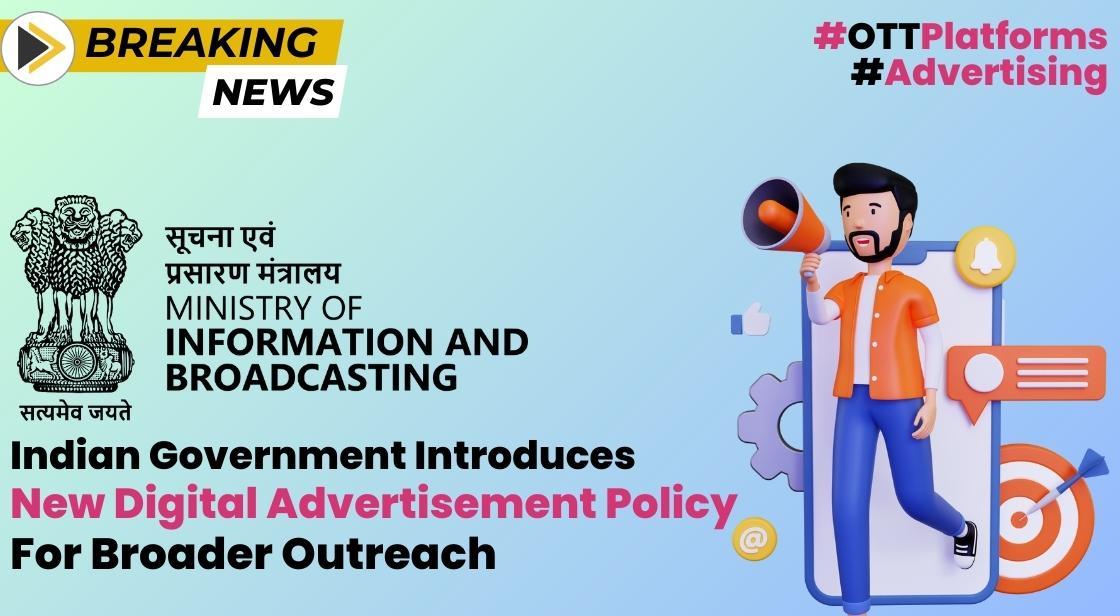Indian Government Introduces New Digital Advertisement Policy for Broader Outreach

News Synopsis
The Indian government has unveiled a new digital advertising policy that will enable websites, mobile applications, digital platforms such as OTT and podcasts with a minimum of 2.5 lakh unique users per month to get government advertisements.
The policy, which was unveiled by the Ministry of Information and Broadcasting, aims to leverage the growing digital audience and also brings in a competitive bidding mechanism for rate discovery.
The policy has been classified into three categories:
-
A+ category: Having more than 2 crore unique visitors a month
-
A category: With 1 to 2 crore unique visitors
-
B category: With 50 lakh to one crore unique visitors
-
C category: Having 2.5 lakh to 50 lakh unique visitors
OTT and Video on Demand Space platforms with more than 2.5 million unique users will be considered under the 'A' category, while those with unique users between 0.5-2.5 million will be considered under the 'B' category.
Expanding on the Digital Advertisement Policy:
Inclusion of Digital Platforms:
Under the new policy, websites and mobile applications garnering a minimum of 2.5 lakh unique users per month are eligible for government advertisements. Additionally, digital platforms such as Over-The-Top (OTT) services and podcasts are also included in this initiative. The move reflects the government's acknowledgment of the expanding influence and reach of digital media.
Classification of Websites and Mobile Apps:
To streamline the empanelment process, websites and mobile apps are categorized based on their user traffic. Categories include A+ (more than 2 crore unique visitors), A (1 to 2 crore unique visitors), B (50 lakh to one crore unique visitors), and C (2.5 lakh to 50 lakh unique visitors). Such classification ensures a targeted approach for different tiers of digital platforms.
Competitive Bidding for Rate Discovery:
The policy introduces a competitive bidding mechanism for rate discovery, fostering transparency and efficiency in the advertising process. Rates determined through this process will be valid for three years and will be applicable to all eligible agencies. This strategic move aligns with the government's commitment to fair and open-market practices.
Expanding to OTT and Podcasts:
One significant aspect of the policy is its extension to OTT platforms and podcasts. This allows the Central Bureau of Communication (CBC) to empanel agencies and organizations in these spaces. Leveraging the growing popularity of podcasts and digital audio platforms provides a contemporary avenue for public service campaign messages.
Mobile Applications Inclusion:
For the first time, the CBC can channelize public service campaign messages through mobile applications. With the increasing use of smartphones, this inclusion recognizes the role of mobile apps as a crucial medium for communication, ensuring a more comprehensive outreach.
Key highlight digital advertising policy
-
The new digital advertising policy was unveiled by the Ministry of Information and Broadcasting on Thursday, November 10, 2023.
-
The policy is aimed at leveraging the growing digital audience and reaching a wider audience with government campaigns.
-
The policy brings in a competitive bidding mechanism for rate discovery, ensuring transparency and efficiency.
-
Websites and mobile applications with a minimum of 2.5 lakh unique users per month, along with other digital platforms like OTT and podcasts, are eligible for government digital advertising.
-
The Central Bureau of Communication (CBC) will be responsible for empaneling agencies and organizations for government digital advertising campaigns.
Conclusion:
The 'Digital Advertisement Policy, 2023' signifies a proactive step by the government to adapt to the changing dynamics of advertising. By embracing digital platforms, incorporating competitive bidding, and expanding outreach to OTT, podcasts, and mobile applications, the policy reflects a forward-looking approach to public communication in the digital age.
You May Like









